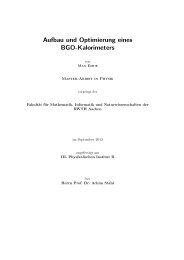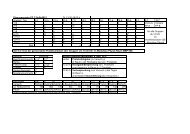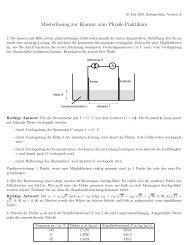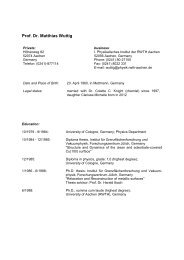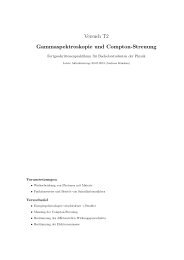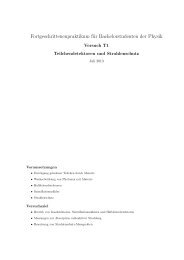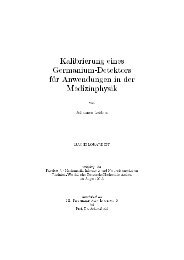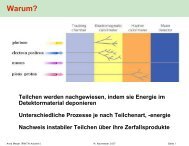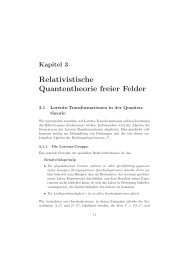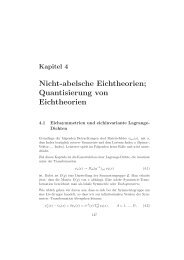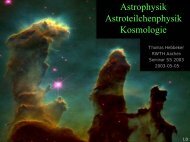Visual Physics Analysis VISPA - RWTH Aachen University
Visual Physics Analysis VISPA - RWTH Aachen University
Visual Physics Analysis VISPA - RWTH Aachen University
You also want an ePaper? Increase the reach of your titles
YUMPU automatically turns print PDFs into web optimized ePapers that Google loves.
Figure 1. <strong>Analysis</strong> steps provided by <strong>VISPA</strong>.<br />
modules are already provided for the purpose of reading/writing event data, or for individual user<br />
analysis code. The latter can be coded directly within a corresponding editor. The visualization<br />
of the module steering facilitates verification of the analysis structure and communication<br />
between physicists doing analysis (Fig. 2). For verification of the analysis, <strong>VISPA</strong> provides<br />
an event browser to inspect the overall event structure, to display particle decay cascades, and<br />
the properties of each particle (Fig. 3).<br />
This contribution is organized as follows: first, the underlying C++ toolkit PXL is described.<br />
Then, the Graphical User Interface of <strong>VISPA</strong> and the Event Browser will be discussed. After<br />
this, the design of the analysis within the <strong>VISPA</strong> framework will be explained. Finally, further<br />
developments will be mentioned and different types of interfaces exploited by <strong>VISPA</strong> will be<br />
discussed.<br />
2. The PXL Toolkit<br />
The C++ toolkit PXL (<strong>Physics</strong> eXtension Library) has been developed since 2006 [9]. It is<br />
the successor of the PAX toolkit, which was developed from 2002 to 2007 [10, 11]. In 2009 the<br />
version 2.1 of the PXL toolkit has been released.<br />
PXL provides all necessary features for an experiment-independent high level physics<br />
analysis with emphasis on user-friendly programming syntax. Particularly, PXL enables the<br />
reconstruction of decay trees and the handling of analyses with reconstruction ambiguities. PXL<br />
offers an extensible collection of physics objects, representing particles (pxl::Particle), vertices<br />
(pxl::Vertex) and collisions (pxl::Collision). In the analysis of an event containing reconstructed<br />
data, new information can be added to each object by means of user event data (pxl::UserRecord).<br />
Between all objects, relations can be established, e.g. to build up decay trees, or to associate<br />
reconstructed particles with generated particles. The class pxl::Event represents an entire<br />
physics event and pxl::EventView is a special view of this physics event. These classes act<br />
as containers for physics objects, holding the relations between them, and serve as the standard<br />
interface to algorithms. Copies of these class instances preserve all contained information such<br />
as the relations between particles. These features efficiently support the evaluation of possible<br />
reconstructed particle cascades.<br />
All objects included into the PXL I/O scheme inherit from pxl::Serializable, e.g. an event<br />
container pxl::Event with its physics objects and relations between them. The PXL I/O scheme<br />
can handle the user defined classes which are explicitly included into it. Each file is made up<br />
of isolated compressed binary data chunks which e.g. contain a certain number of events. The<br />
current I/O system is able to handle the files from a local disk. In the future handling files of<br />
the dCache system will be included.





